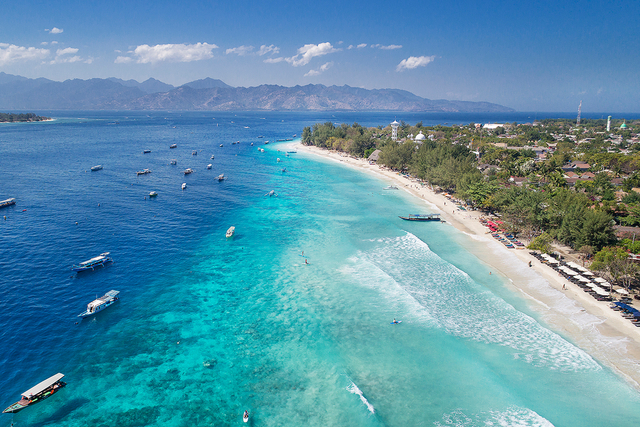
Although each of the Gili Islands has its own unique vibe, they all share a common geophysical feature: the western sides usually have wide, shallow reef areas, while the eastern sides tend to be narrower.
This difference affects swimming conditions. On the eastern coast, swimming is almost always possible—except during very strong low tides. The western side is better suited for swimming during high tide. You can check the tide schedule using the "Gillis" app on your phone.
Beach conditions also vary: the eastern beaches are mostly sandy with some coral debris, while the western beaches are primarily coral with occasional sandy patches.
If you swim on either side, you may notice a southern current, which can change in strength depending on the weather. Avoid swimming into shallow coral zones with sudden drop-offs, and never try to swim between the islands—use a boat instead 😊
Gili Meno is known as the safest island when it comes to leaving belongings on the beach. Still, if you're going for a long swim or snorkel session, it's best not to bring anything you’d regret losing.
Planning to snorkel during low tide? Be sure to wear coral shoes or fins—walking barefoot on coral can be painful and dangerous. Coral shoes are easy to find on all three islands at dive shops, snorkeling centers, and even some supermarkets.
🏝️ Gili Trawangan
Eastern Beach – North of the Port
The most comfortable and convenient beach for swimming is located on the eastern side, just north of the port. Walk about 200–300 meters from the port, and you’ll reach a stretch of soft white sand with easy access to the water.
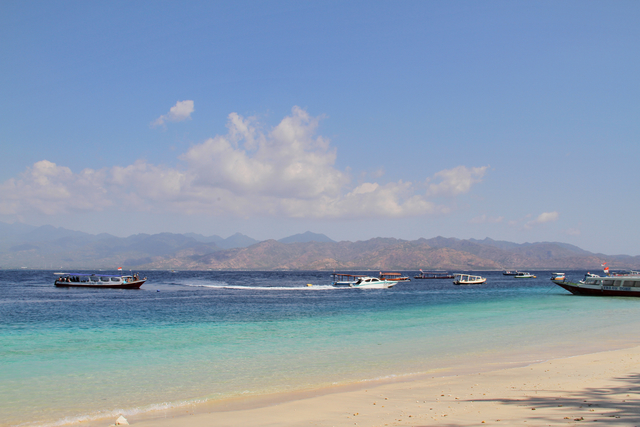
Natural Shade: Trees line the beach, offering natural shade—though they sometimes drop dry leaves on the sand.
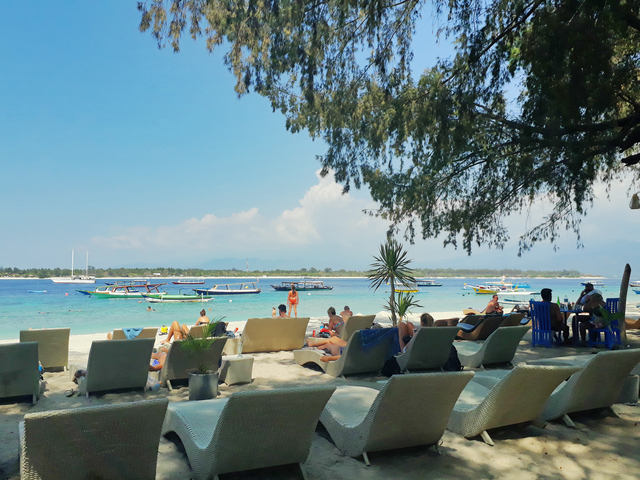
Facilities: Numerous beach cafes and restaurants are scattered along the shore. If you buy something, you can usually use their sun loungers.
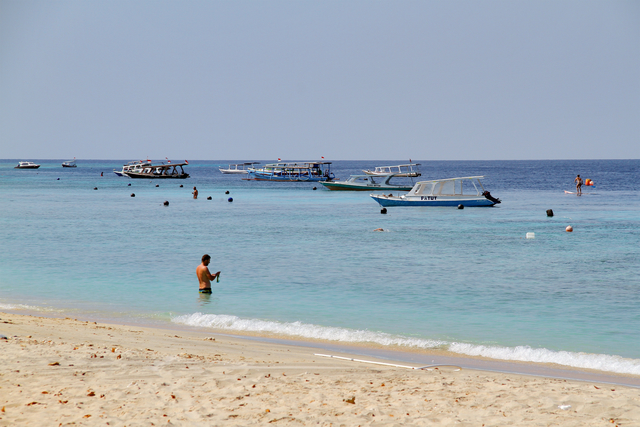
Activities: This beach is a hub for water sports, including:
- Kayaking
- Paddleboard yoga
- Parasailing
- Inflatable rides like donuts
- Wakeboarding
- Subwing (underwater gliding)
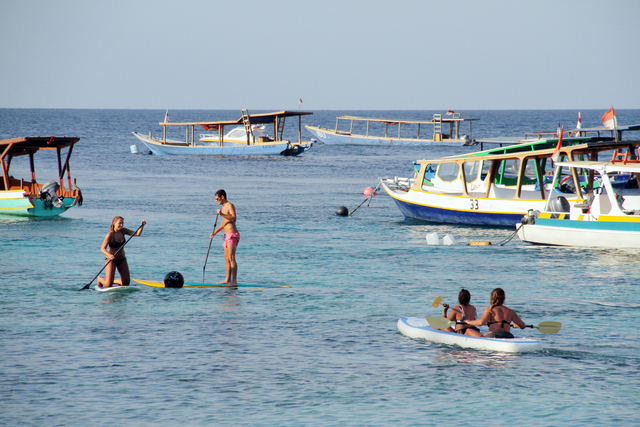
Snorkeling & Diving:
- Snorkeling sets (mask, snorkel, fins) can be rented for 50,000 IDR/day.
- Several dive centers are based here: Gili Divers, Trawangan Dive Centre, Blue Marlin Dive, Laguna.
- Boats depart directly from the beach to nearby dive sites.
- Near Carpe Diem restaurant in the north, snorkelers often encounter turtles, and the Trawangan Dive Centre is also nearby.

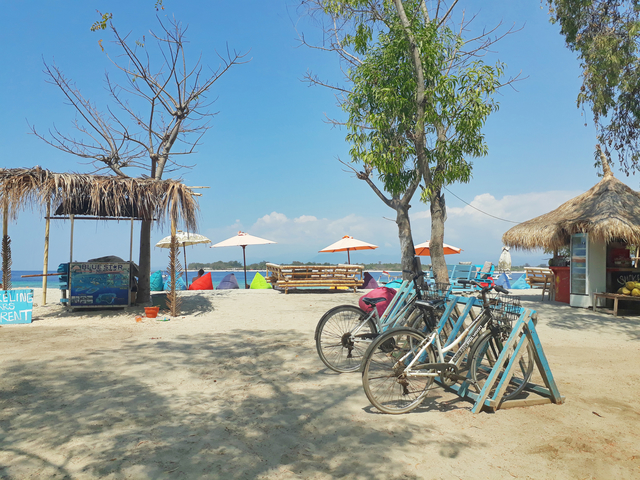
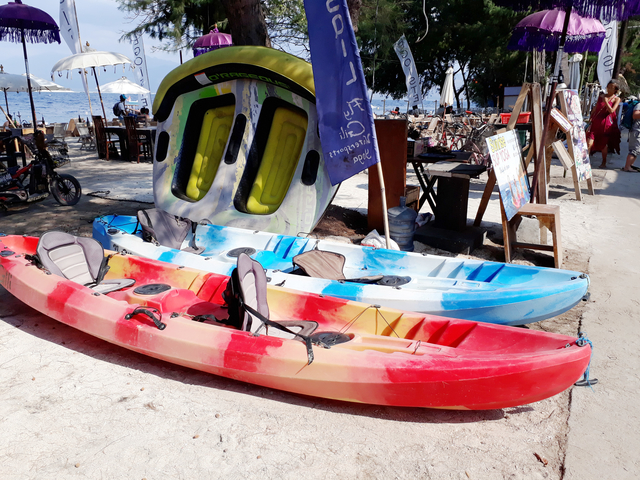
Even though boats are moored along this beach, there's always space to swim, and the captains are generally attentive to swimmers.
Eastern Beach – South of the Port
South of the port, the eastern beach remains swimmable, though the shallow reef area widens and becomes increasingly coral-filled as you head further south.
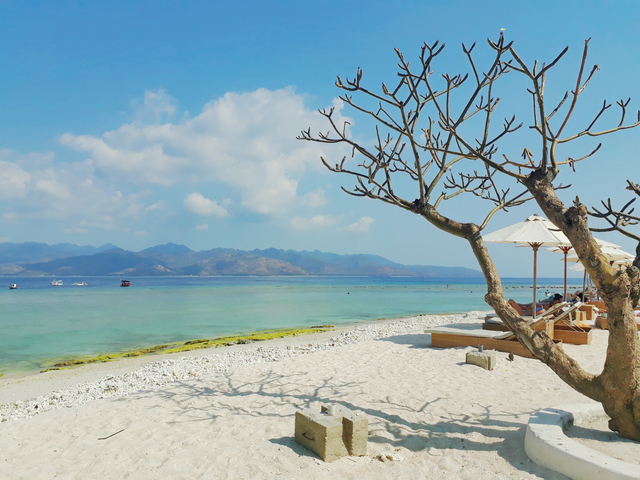
Atmosphere: This area features more upscale resorts, elegant beach clubs, and stylish restauran

Highlights:
- Near Hotel Villa Ombak, about 50 meters offshore at a depth of 3 meters, lies Biorock – an artificial reef promoting rapid coral growth.
- The site is also home to the famous underwater bicycles, perfect for Instagram shots.
- Behind the Pearl of Trawangan, you’ll find two spots for surfboard rental. There's a surf spot nearby, though it’s unpredictable—don’t come just for surfing, but take advantage if the waves are up
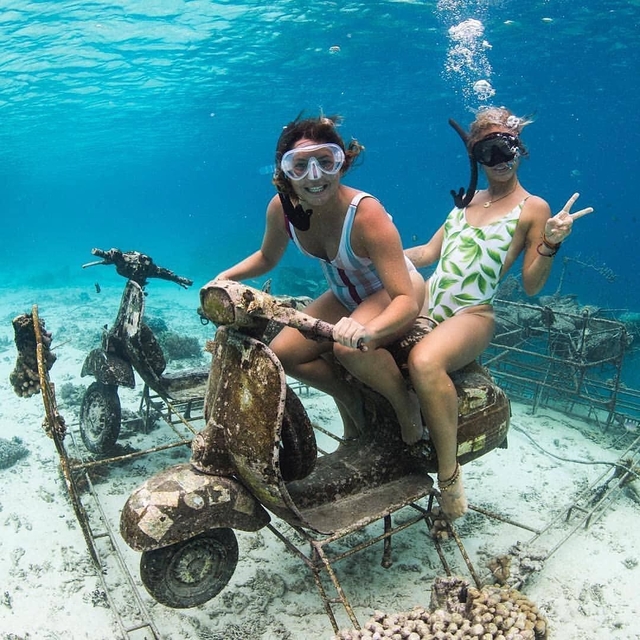
Diving: Dive centers here include Manta Dive and Dive Central.
Snorkeling: Equipment is available for rent, and the coral views are quite scenic.
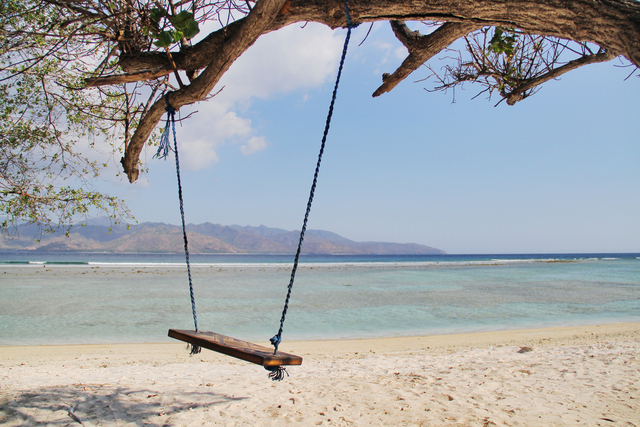


Photo Ops: Towards the southern shallows, the landscape features twisting trees and shaded corners ideal for relaxing or taking photos.
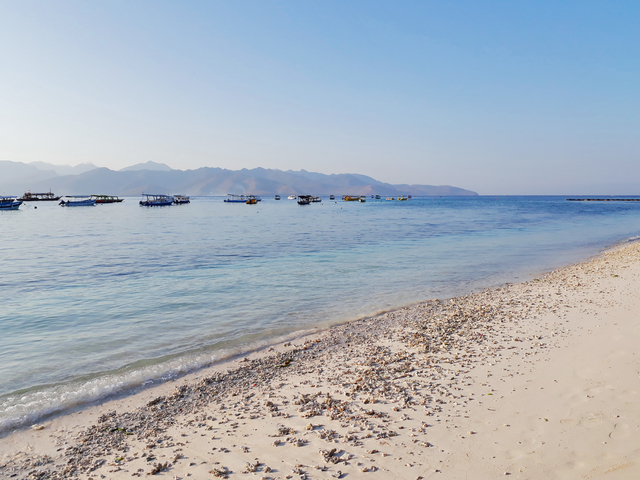
Southern Beach

The southern coast is generally unsuitable for swimming, especially during low tide, but it offers unique scenery and is popular for photoshoots.
Western Beach
The western side is known for its laid-back sunset scene, with several chic beach bars and resorts.
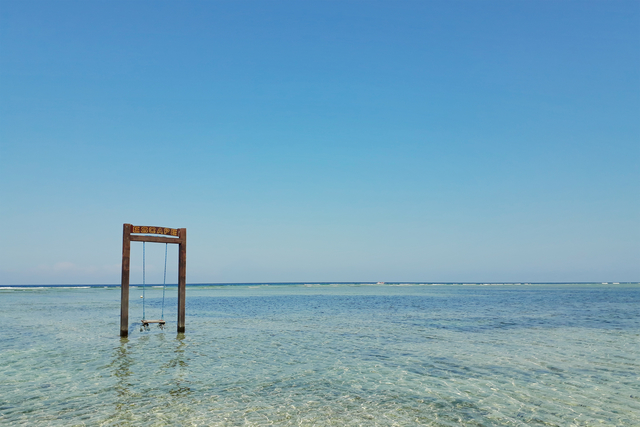
Sunset Spots: Popular places include:
- Casa Vintage Beach – rustic and stylish
- The Excile – occasionally hosts drum concerts
- Aston Sunset Beach Resort – screens outdoor movies in the evening
- Window Bar – a casual sunset hangout near the road exit from the island’s center

Evening Vibes: DJs play chill music, horse riders pass along the sand, and beachgoers line up for photos on swings in the sea—there are at least seven swings along this coast.
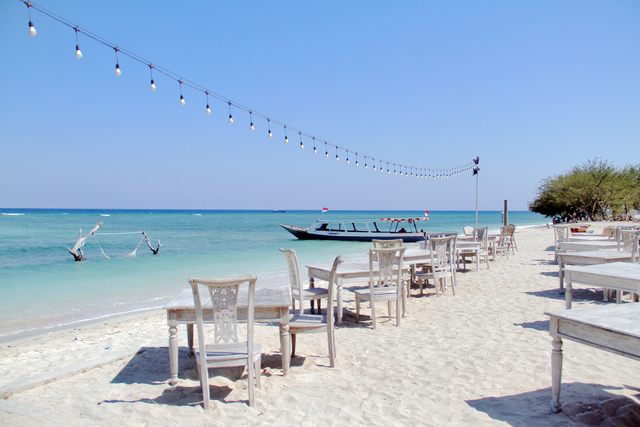
Swimming: Best during high tide. Some areas may have seaweed wash-up after strong winds, but in front of larger resorts, beaches are well-maintained and cleared of coral and debris.
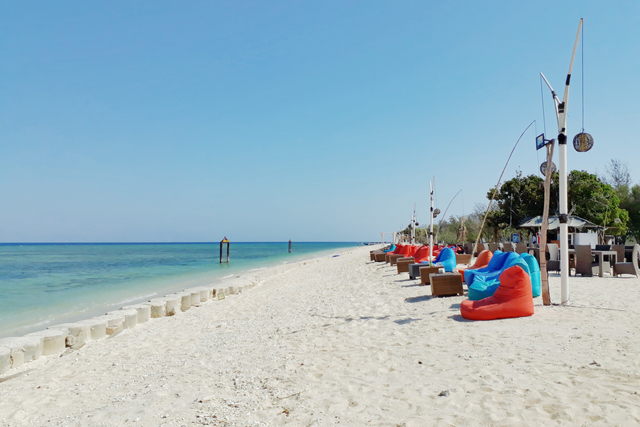
Snorkeling: Accessible directly from the beach. Look for dive centers and tour boats during the day—they usually visit the best spots.
In the northwest, two notable snorkeling and dive sites are Shark Point and Halik Reef.
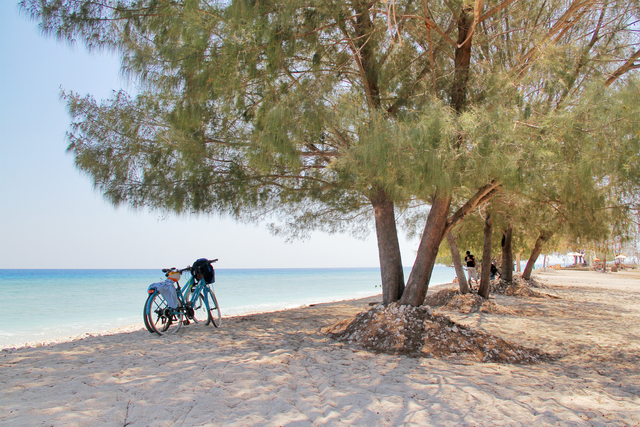
Nature: The western beach is lined with chemara trees (Indonesian pine), adding a fragrant, breezy atmosphe
Northern Beach
The northern beaches of Gili Trawangan share similar swimming and beach conditions with the western side.
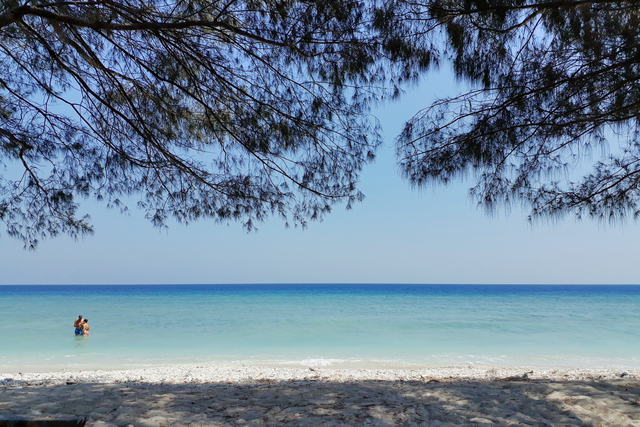
Peaceful Atmosphere: There are no sunset bars, making this area quieter and more relaxed.
Swimming: Best enjoyed during high tide.
Landscape: Fewer deciduous trees and more coniferous (pine-like) trees, offering a distinct northern look.
🏝️ Gili Meno
Eastern Beach – North of the Port
The water near the port is stunningly clear, but it’s not used for swimming due to the presence of boats.
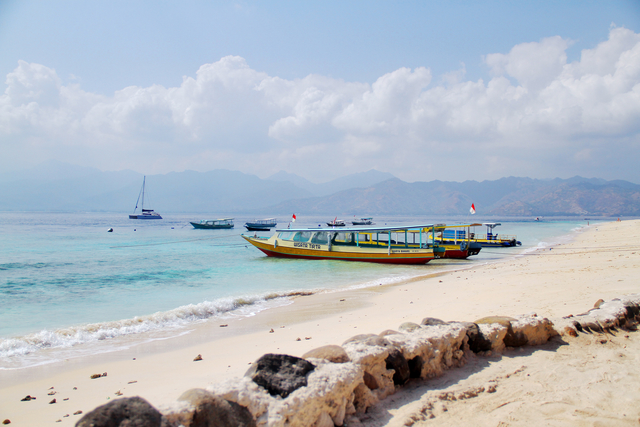
Continuing past the pier, you’ll reach a mangrove-lined stretch with driftwood on the sand — not ideal for lounging, but great for striking photos.
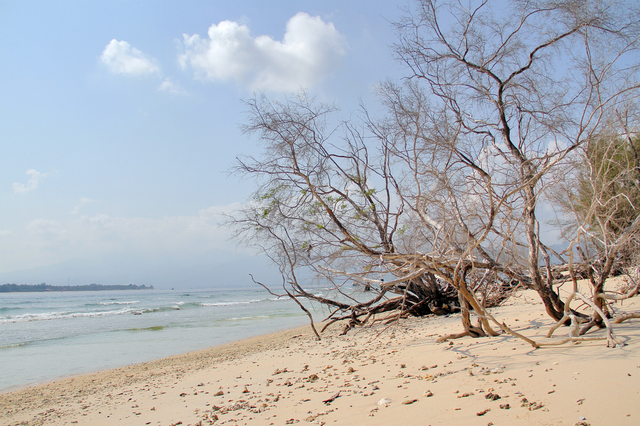

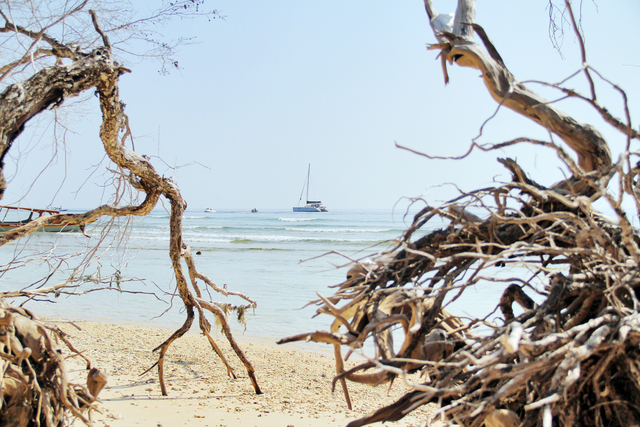
Starting from Seri Resort and moving northwest, you’ll find a pleasant stretch of sandy beach suitable for both swimming and snorkeling. During the day, many boats anchor offshore as they bring tourists for turtle spotting, diving, and snorkeling. The coral here is colorful and interesting, making it a great snorkeling location.
🔹 Facilities:
- Snorkeling gear is available for rent, though options are limited — best to rent from your hotel or en route to the beach.
- No convenience shops nearby, only beach resorts and eco-hostels.
- Drinking water should be brought with you.
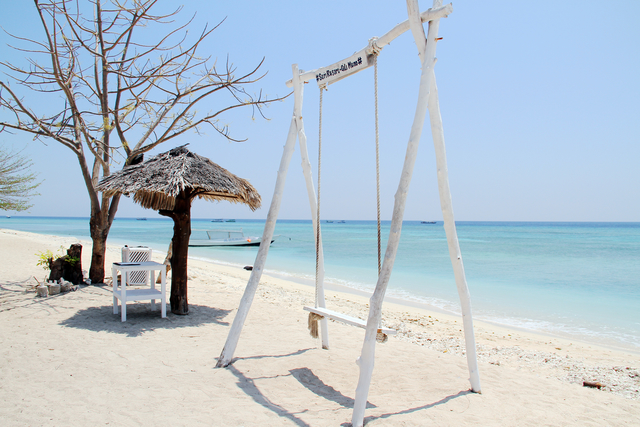
Northern Beach
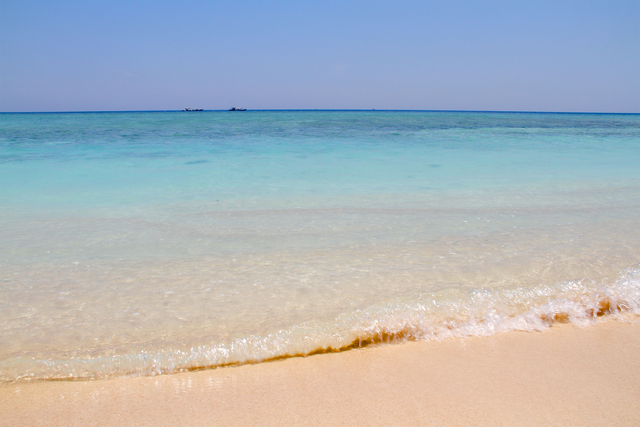
The northern coast shares similar conditions with the northeast:
- Coral gardens and turtle sightings are common.
- A few beachfront restaurants exist, but infrastructure is sparse, so expect a quieter, more remote feel.

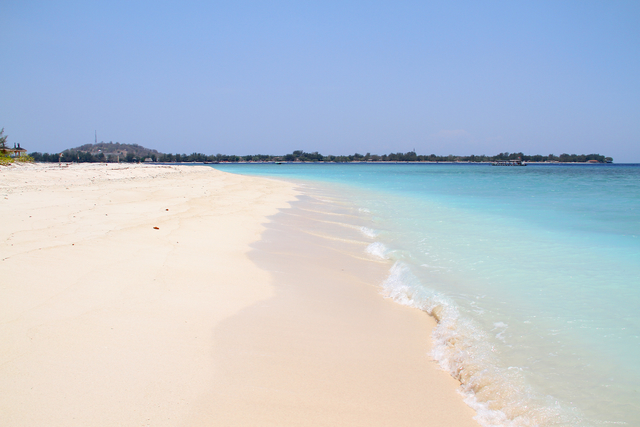
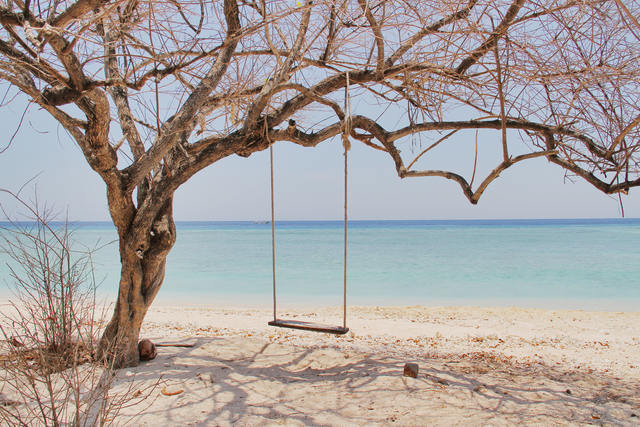

Western Beach
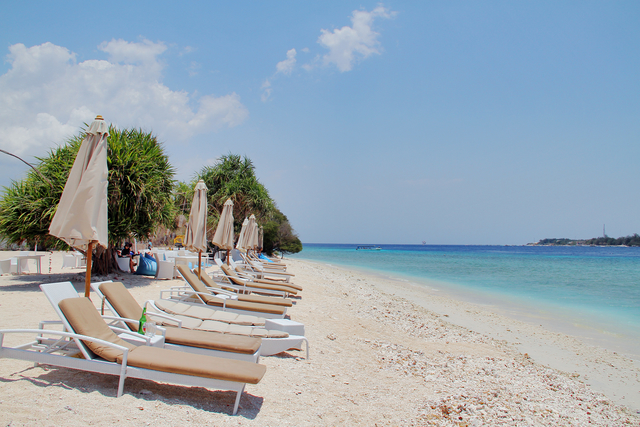
The northwest coast is home to Divine Divers, where you can get updates on dive sites, marine life, and currents.

Across from Mahamaya Resort, there’s a great swimming spot with small fish visible just 7–10 meters from shore and turtles further out in the coral zone (~20 meters).

🔹 Beach Conditions:
- Sand begins at the water’s edge, but most of the beach is coral-covered, so bring a mat if you’re not using a lounger.
- The sand on the road here can be sticky — if you're on a bike, expect to push it in places.


🏖️ Other Highlights:
- Just beyond Diana Café, you’ll see the Bask Resort. The beach there is clean and coral-rich, with some of the most beautiful beach corals on the island.
- The famous underwater statue installation “Nest” (or “Haven”) is located here — just walk about 50 meters past the hotel’s central sign towards Trawangan.
- This area also features the Meno Wall dive site, ideal for snorkeling and diving during high tide. At low tide, sharp corals and tall soft corals make access more difficult — check the Gillis app for tide updates.
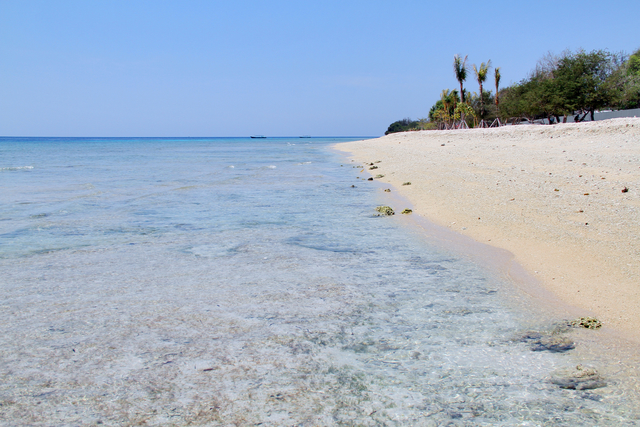
📝 Tip: Bikes on Meno are often left unlocked, and even snorkelers leave their belongings in their baskets.

🌅 Sunset Spot: Diana Café
- A cozy beach café popular during sunset.
- Offers loungers, tables, bean bags, and a picturesque setting with blooming bougainvillea.
- Located along one of the few roads connecting the east and west coasts.

🌅 Alternative Sunset Spots:
- Mahamaya Resort Restaurant
- New Sasak Cafe
- A few smaller beach cafés nearby
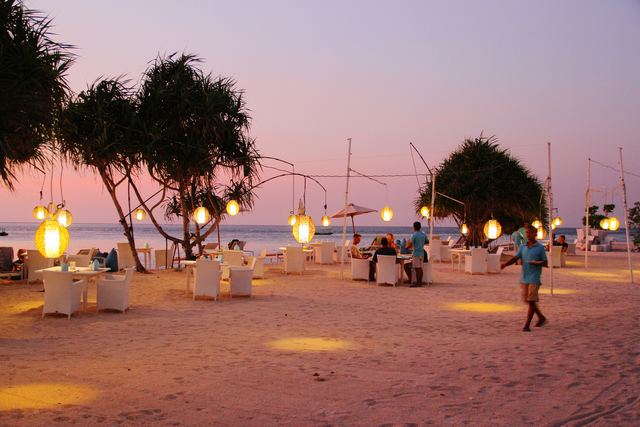
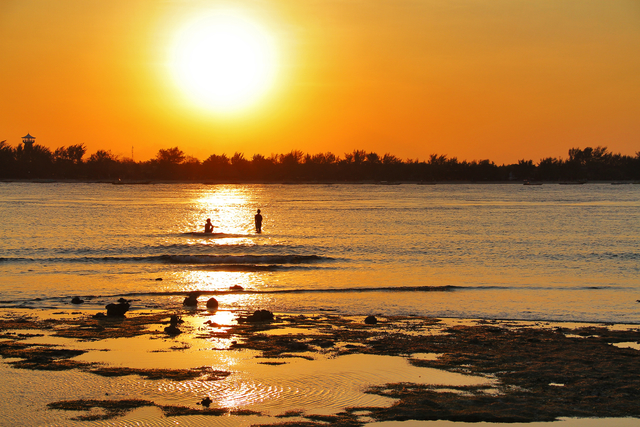
Further south, the coast becomes shallow again, suitable for swimming only during high tide, with dive sites like the “Sunken Ship” Bounty wreck — remnants of a boat and a couple of staircases resting 16–20 meters underwater, visible from the surface.
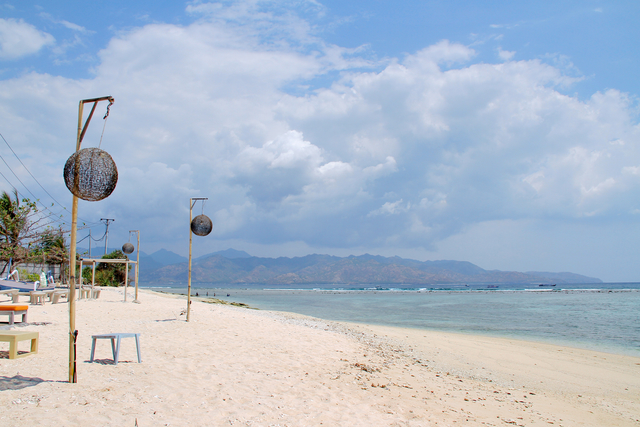
Southern Beach
The southern coast is the least developed, with minimal infrastructure.
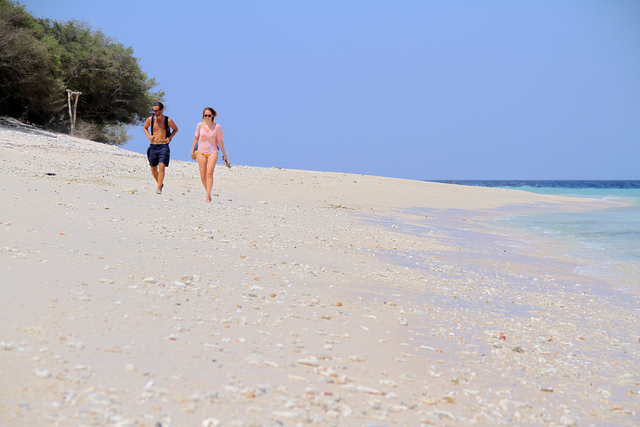
The beach features a very long shallow zone, making it less ideal for swimming, but perfect for quiet relaxation or romantic photoshoots.
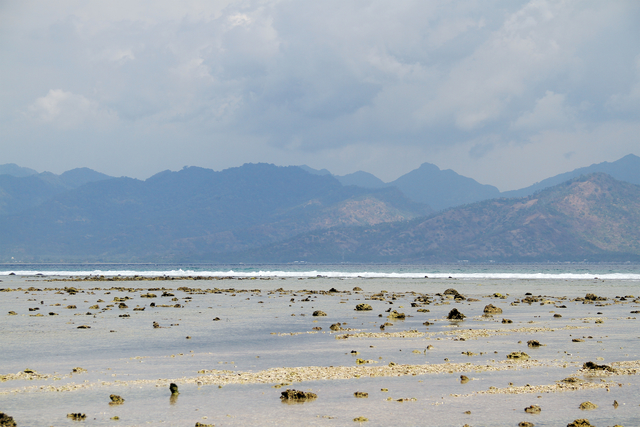
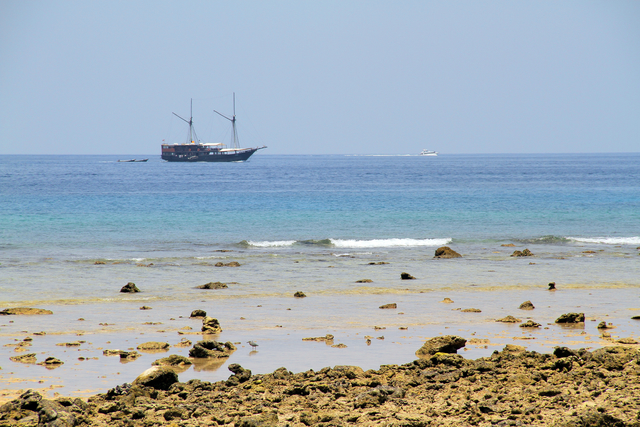

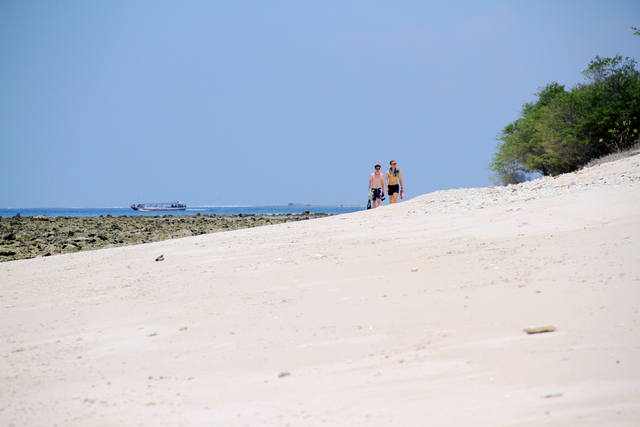
Eastern Beach – South of the Port
Near the site of the former Van der Valk Kontiki Beach Resort, the long shallow area ends, and a beautiful, swimmable beach begins.
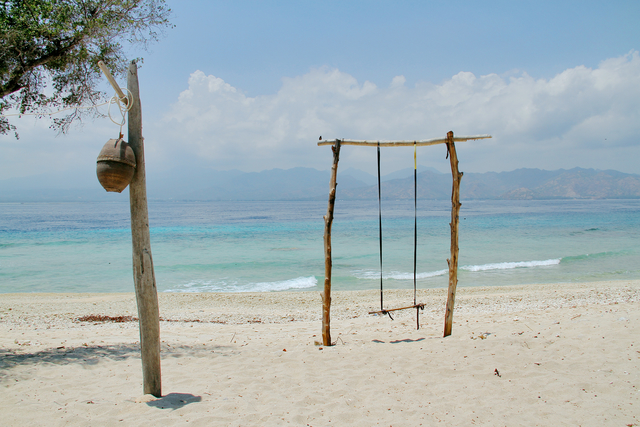
Water & Sand: The sea is crystal-clear, with soft white sand and scattered decorative coral lying on the shore.
View: On clear days, you can enjoy scenic views of Lombok’s mountains across the strait.
Comfort: It’s comfortable to relax right on the sand with just a sarong.
Shade: Only available under the coniferous trees, though the pine needles can be a bit messy.
Swimming is possible almost all the way to the port, and on the northern end of this beach sits the Blue Marlin Dive Center.
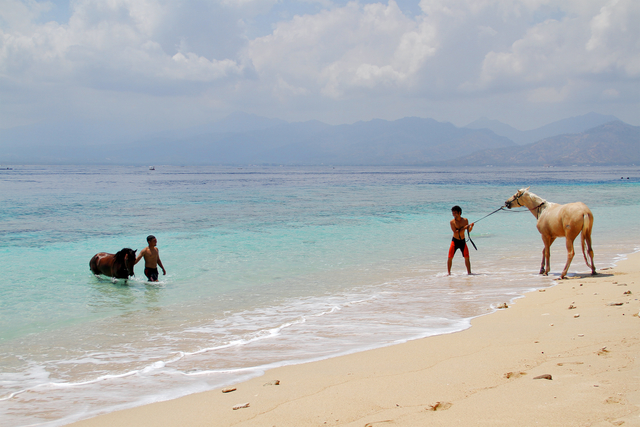
At the port area, you’ll also find a few kiosks where you can:
- Rent snorkeling gear
- Book snorkeling trips
- Arrange horseback riding tours

🏝️ Gili Air
Gili Air is often said to have the most beautiful beaches of the three Gili Islands. But beauty is subjective — some travelers may prefer the secluded shores of Gili Meno, or the sunset views from the west coast of Gili Trawangan. What sets Gili Air apart is its proximity to Lombok, offering stunning views of its misty mountain ranges, which dramatically enhance the island’s coastal charm.
Southern Coast – The Port Area
The southern coast is home to the main port, which makes it the island’s busiest area.
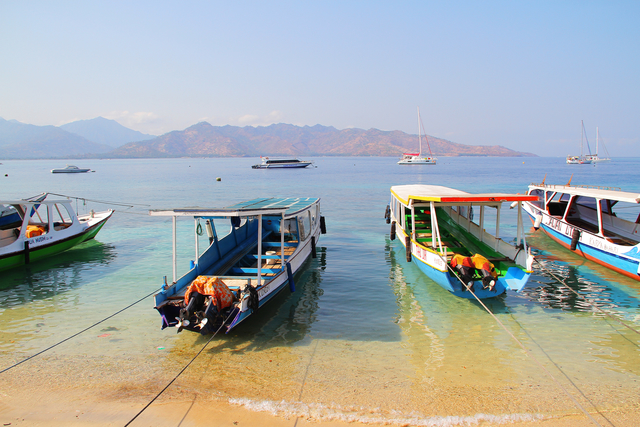
Swimming is not recommended here due to frequent boat traffic.

You'll find plenty of kiosks offering:
- Snorkeling tours
- Excursions to Lombok
- Horseback riding and local transport

Eastern Coast – From Scallywags Resort Northward
From around Scallywags Resort, a beautiful stretch of beach begins:
- White sand
- Easy water access
- Beach bars and lounge chairs
- Amazing views of Lombok
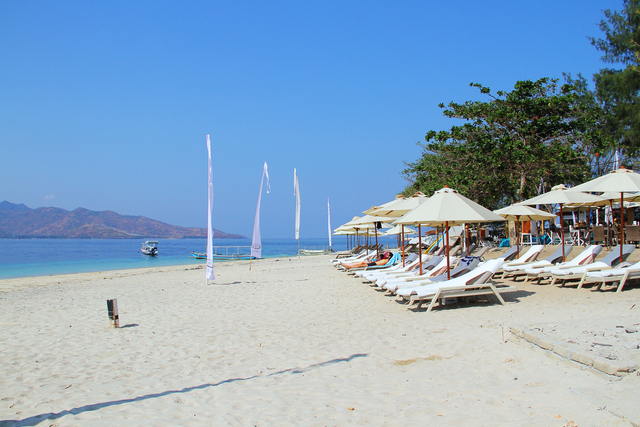
There are also seafood restaurants offering relaxed dinners with tables, gazebos, bean bags, and shady spots under the trees.
🧭 As you approach Sunrise Resort, the beachfront narrows, making swimming harder — but this is where the good snorkeling begins.
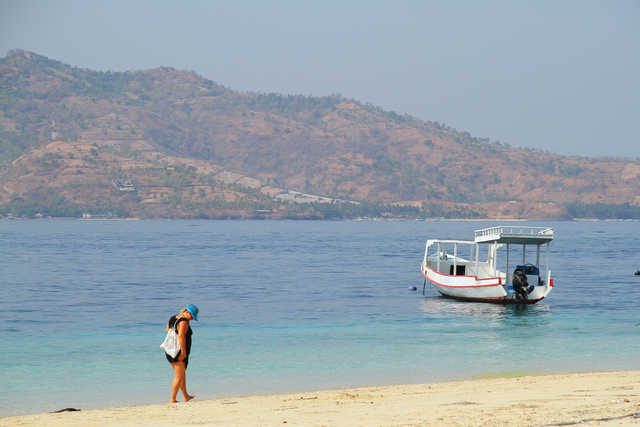
🌊 Dive Centers on the East Coast:
- 3W Dive
- Blue Marline Dive
- Ask them about the best times and spots for spotting colorful fish and sea turtles.
Just across from Manta Dive Resort, about 30 meters from shore, you’ll find an artificial coral reef — a favorite among local divers.
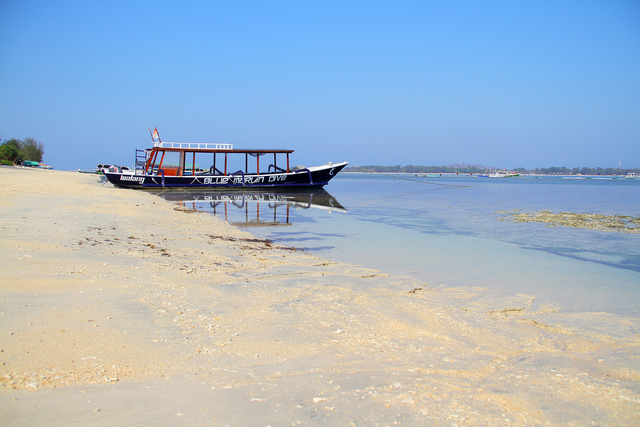

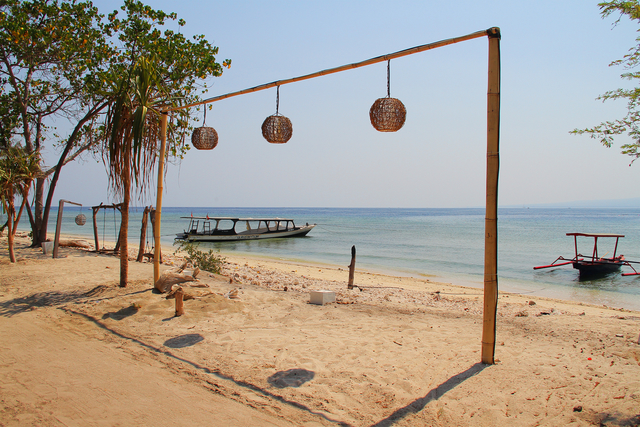

Northern Coast – Sandy Shores & Shallow Lagoons

The northern beaches are a mix of:
- Soft white sand
- Wider tidal flats
- A broad coral reef offshore
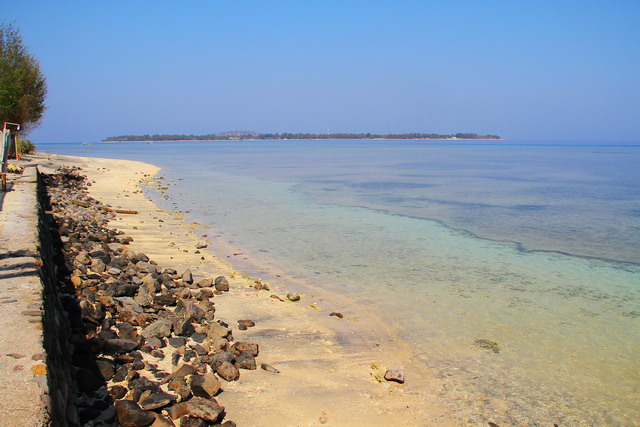
🕓 Best visited during high tide, when the tide creates shallow, warm lagoons perfect for families and safe for children to swim in.
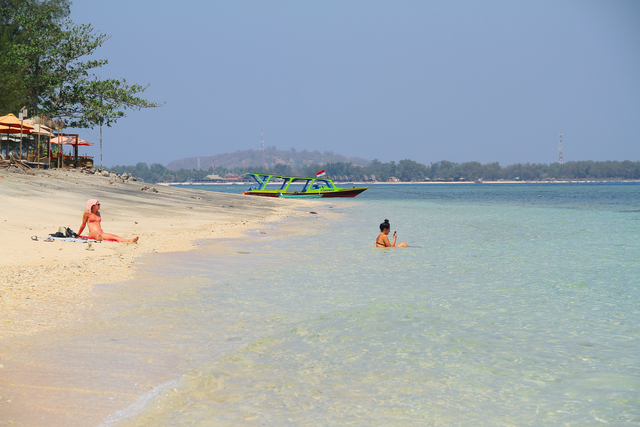
🍽️ The area is lined with colorful beach cafes and restaurants.


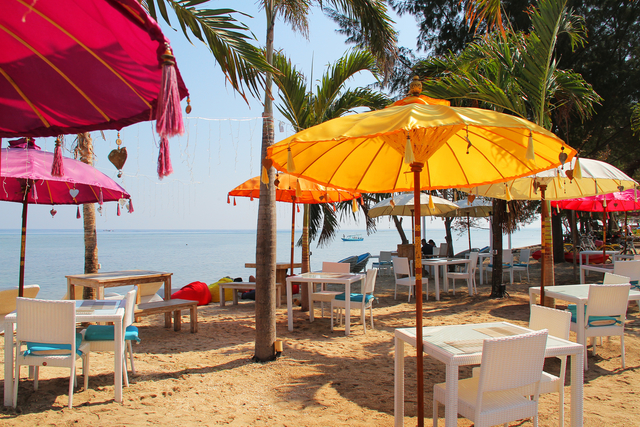
📸 Expect to see:
- Swings in the water
- Hammocks and bean bags
- Pine trees offering shade
- Plenty of Instagram-worthy backdrops
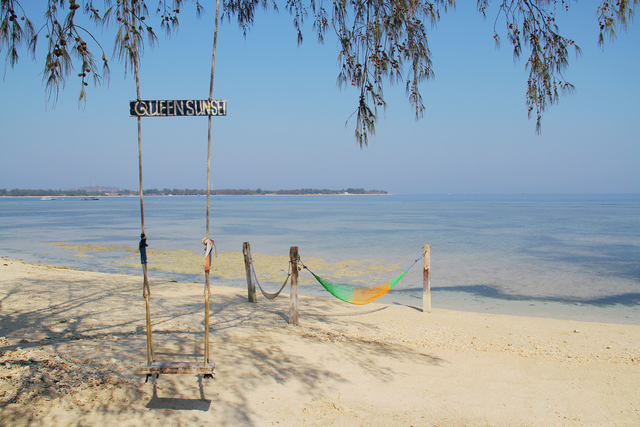

Western Coast – Sunset Views and Tidal Playgrounds
The western side is greatly affected by the tides. At low tide, a long stretch of shallow water emerges, often covered in seaweed and dotted with sea urchins. If you enjoy walking in shallow water and observing marine life, it’s a unique experience — just wear sandals or water shoes.

🌅 As the sun sets, this side of the island becomes lively with chill beach bars playing soft music and offering scenic views.
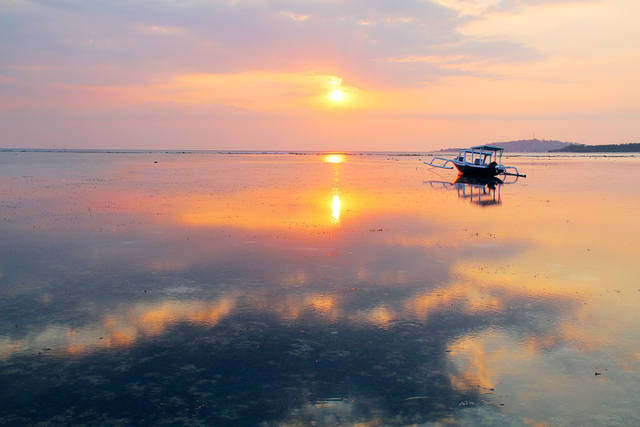

📍 Top Sunset Spots:
- PinkCoco Gili Air – Known for:Pink swings and a pink boat with a parasol in the waterTrendy decor and great photo ops
- Lumbung Beach Bar – Features:Swings, a scenic cape, and occasional live music concertsStunning dual views: south to the mountains of Lombok, and west to the setting sun
- Ombak Paradise – Offers outdoor movie screenings
- Mowie’s – Lights up beautifully in the evenings with vibrant lanterns

At low tide, the southern side of the beach can turn into a mirror-flat water surface, creating surreal reflections — perfect for photography.
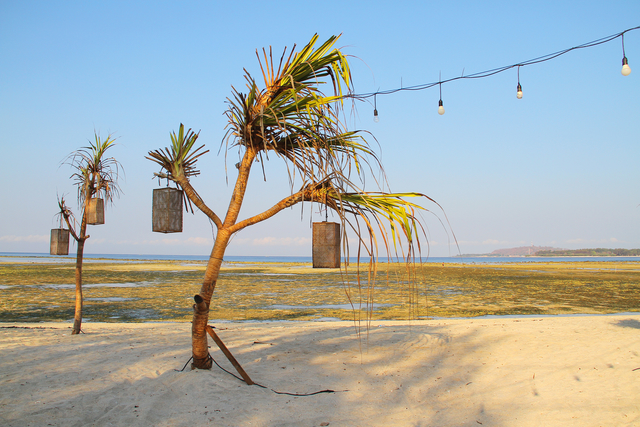
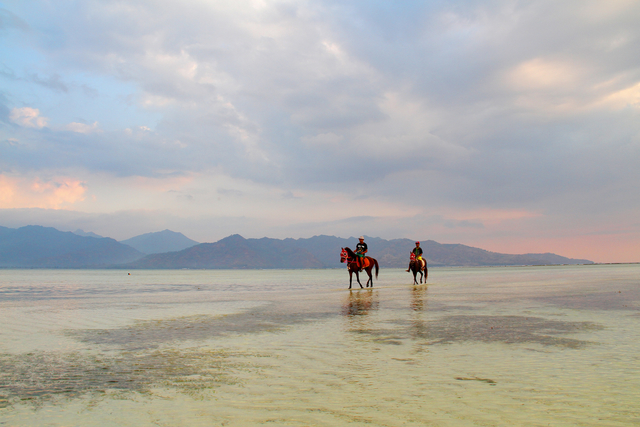
Is it only the western beach of Gili Air which is affected by low tides or all of them? Are some able to be swimmable during low tide also? Are the currents too strong to swim even during high tide?
Thank you for your feedback, much appreciated!